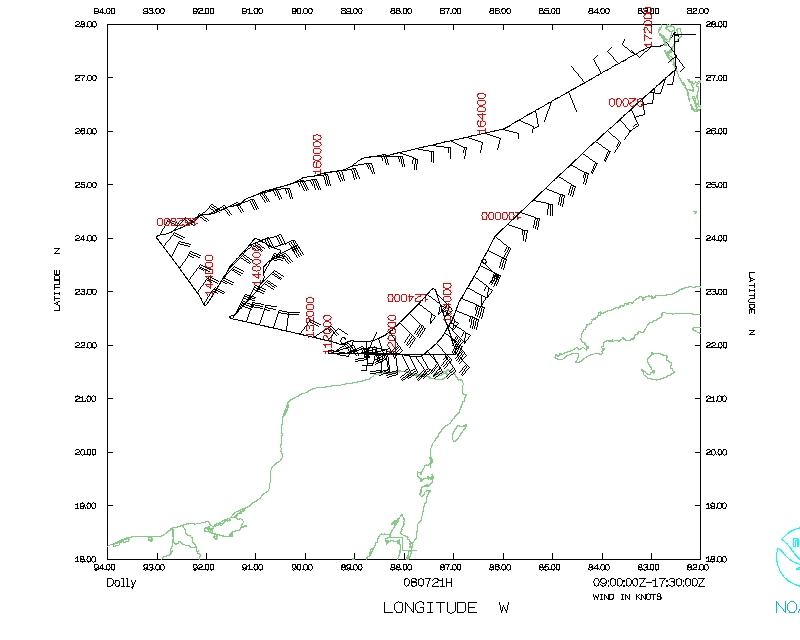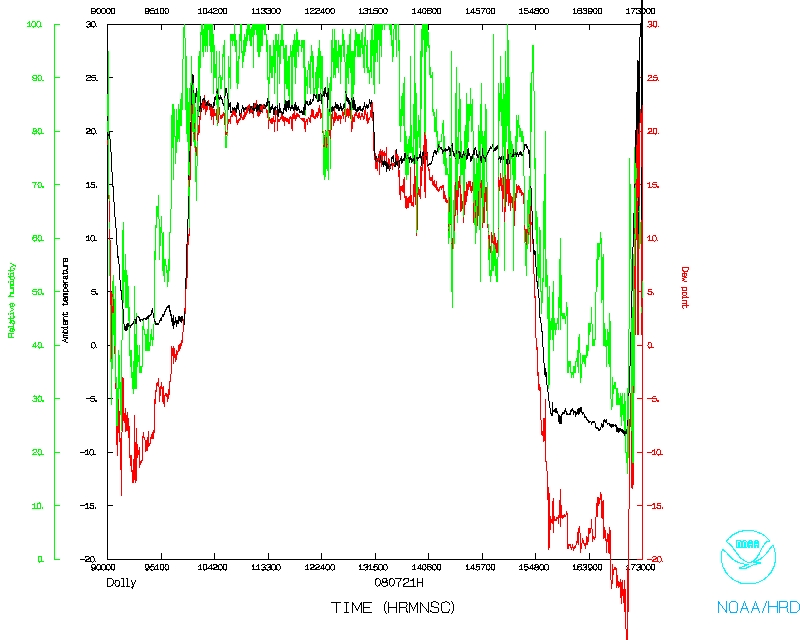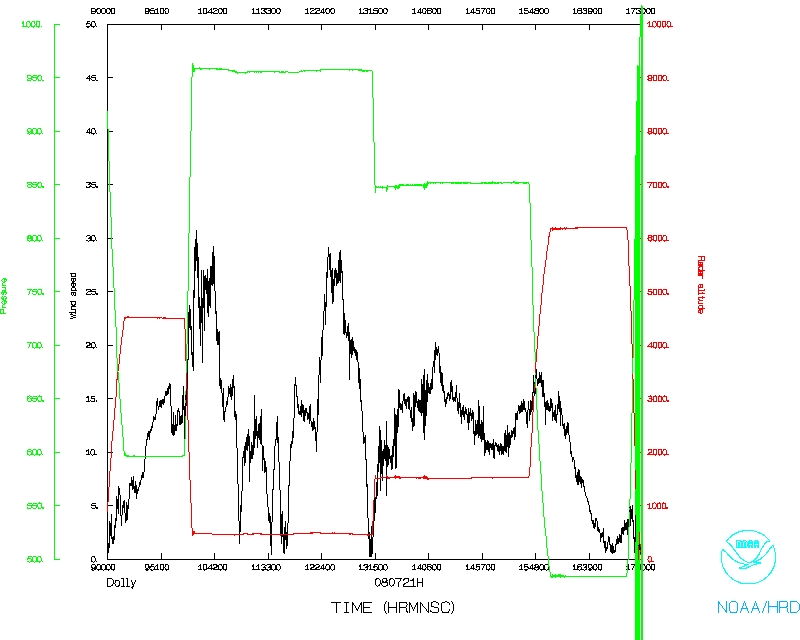Mission Summary
20080721H1 Aircraft 42RF
Trop. Storm Dolly Tail Doppler mission 2008
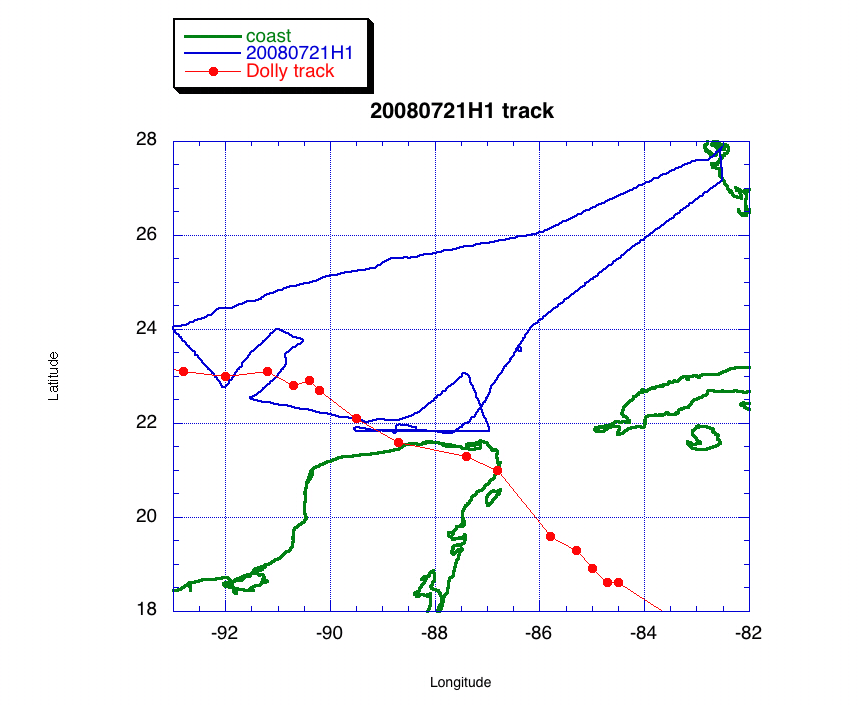 Mission Summary
Mission Summary
Scientific Crew (42RF)
| Lead Scientist | Mike Black |
| Doppler/Dropsonde Scientist | Sylvie Lorsolo |
Flight Crew (42RF)
| Pilots | Barry Choy
Al Girimonte |
| Flight Director | Barry Damiano |
| Navigators | Tom Gallagher
Ryan Kidder |
| Flt. Eng. | Greg Bast
Steve Wade |
| Data Tech | |
| Elec. Tech | Bill Olney
Joe Bosko |
Mission Plan :
This was to be the third flight in a series of flights into Tropical Storm
Dolly, which had crossed over the northern portion of the Yucatan peninsula
overnight and was forecast to emerge over the southern Gulf of Mexico during
our flight. NHC had doubts as to whether or not Dolly still had a surface
center but was maintaining the system as a TS because of continuity and the
likelihood Dolly would regain the circulation and strength of a TS. The
mission objectives were a combination of reconnaissance fix responsibility at
1200 UTC, Doppler wind analyses and transmission for NCEP and HRD, and a
deployment of a small array of AXBTs ahead of the storm for over flights on
subsequent missions. The center fix would be done at 1500 ft and the Doppler
radial profiles at 5 kft altitude. A set of 12 AXBTs in 3 to 4 lines would be
deployed perpendicular to the forecast track centered at the 24 hr and 36 hr
forecast points.
Mission Summary :
| Take off
| Landing
| MacDill AFB, FL | 08:57 UTC
| MacDill AFB, FL | 17:28 UTC
| |
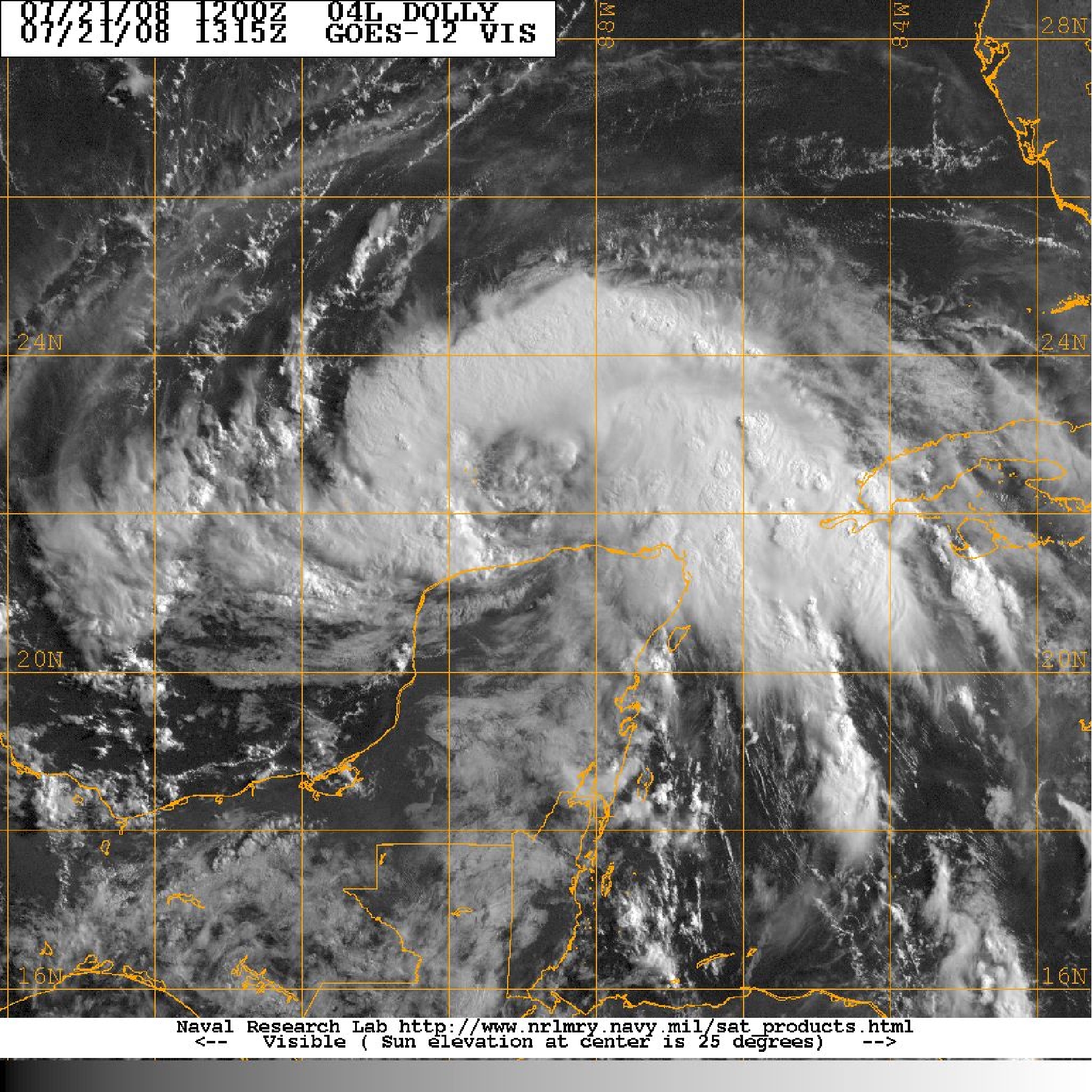
The takeoff was on time at 0857 UTC and N42 headed southwest to an IP at 23.1
°N, 86.7°W. The IP was reached at 1028 where N42 descended to 1,500
ft for a run from the NE of the center to a point west of the center along the
northern coastline of the Yucatan toward the center. We reached an apparent
center at 1105 UTC where winds at our 1500 ft height switched from SSE to
northerly. Any west winds, however, would have occurred south of our flight
track over the Yucatan peninsula. The center wass just north of the coastline
at about 22°N, 89°W. N42 headed 105 nmi west of the center and at
1122 UTC, we turned around back to the east for another pass through the
center of circulation, which we reached at 1142 UTC. We again showed light
winds nerd the center with an abrupt wind shift. At 1219 UTC, the aircraft
was about 100 nmi east of the center and turned toward the north. When N42
reached a point about 100 nmi NE of the center at 1256 UTC, we made a final
pass to the center from NE to SW. Out final pass into Dolly's center was at
1310 UTC and we found similar wind shifts as before but the center was clearly
moving NW away from the Yucatan and into the open Gulf waters.
The center fix responsibility had been met and now our mission would
concentrate on deploying AXBTs and dropsondes ahead of the forecast track.
We would deploy a small array of AXBTs and dropsondes to the NW of Dolly's
center so that future missions could drop at the same locations and compare
how the ocean and atmospheric conditions changes as Dolly passed over that
area. N42 climbed to 5,000 ft and dropped 12 AXBTs, 7 of which were collocated
with GPS dropsondes. The SSTs ranged from 28-29°C with mixed-layer depths
from 25-50 m, based on the AXBT observations. After releasing the lines of BTs,
N42 climbed and headed for MacDill where we landed at 1728 UTC.
Figure 1 shows the flight track and precipitation pattern from the LF
radar on a 480x 480 km domain. The system was much more organized than 24 hours
earlier with banding clearly present. The main precipitation feature was a
large SW-NE oriented band that contained numerous convective cells. Strong
radar return south of Dolly's center are from the coastline of the Yucatan and
areas that appear as precipitation near the aircraft (1310) are partially due
to sea clutter.
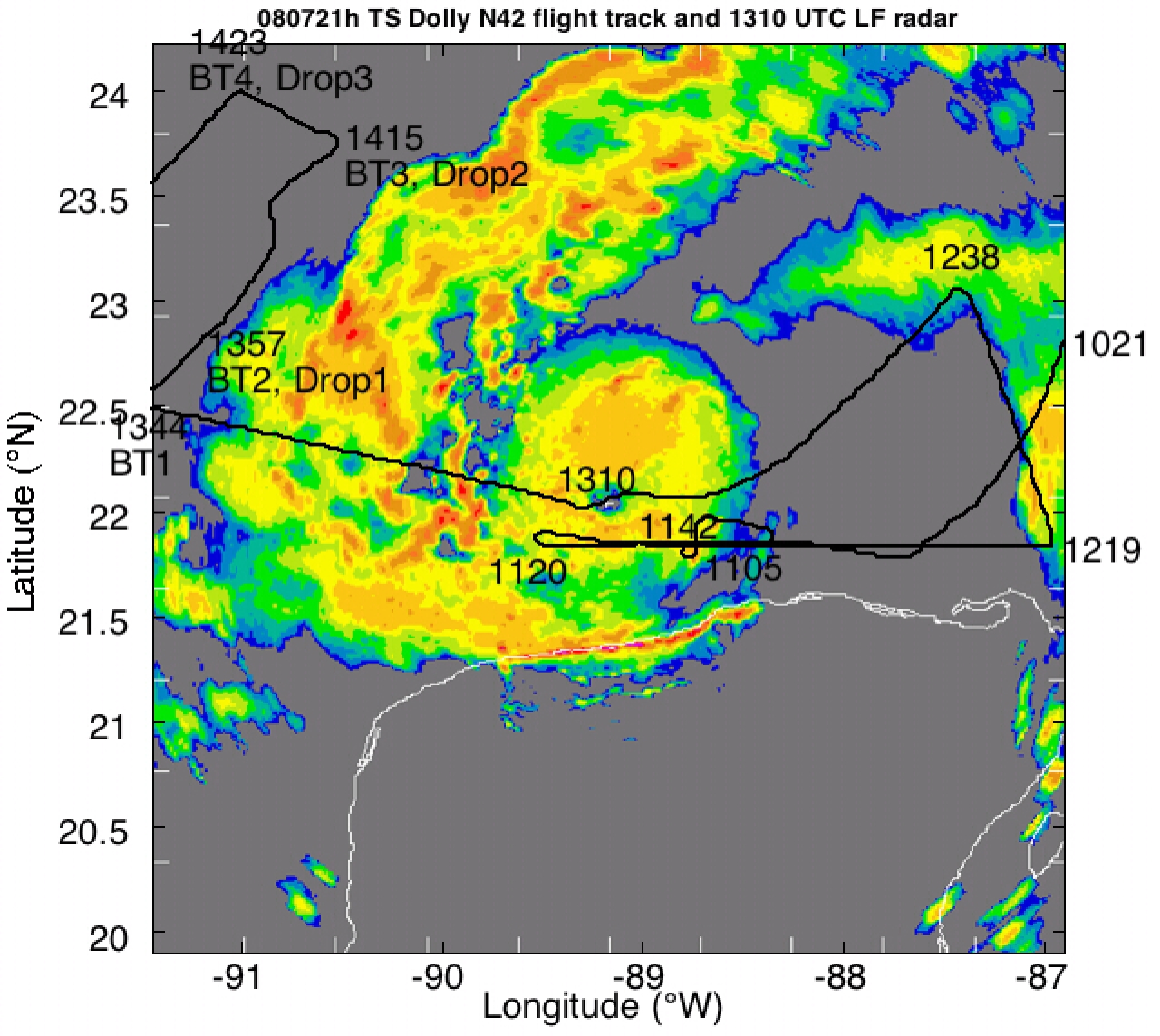
Figure 1. Track of N42 overlaid on LF imagery. Times in UTC, AXBT (BT)
and GPS dropsonde (Drop) locations are denoted along the track.
Figure 2 shows the flight-track with flight-level wind barbs (kt) along the
track and locations of the 12 AXBTs and 7 dropsondes. Center crossing were at
1105, 1142, and 1310 UTC. Flight-level (1500 ft) winds were up to 50 kt NE and
W of the center. Figure 3 is a close up of the SFMR and dropsonde wind
observations near the low-level center. The surface winds indicated a less-well
defined center than at flight-level.
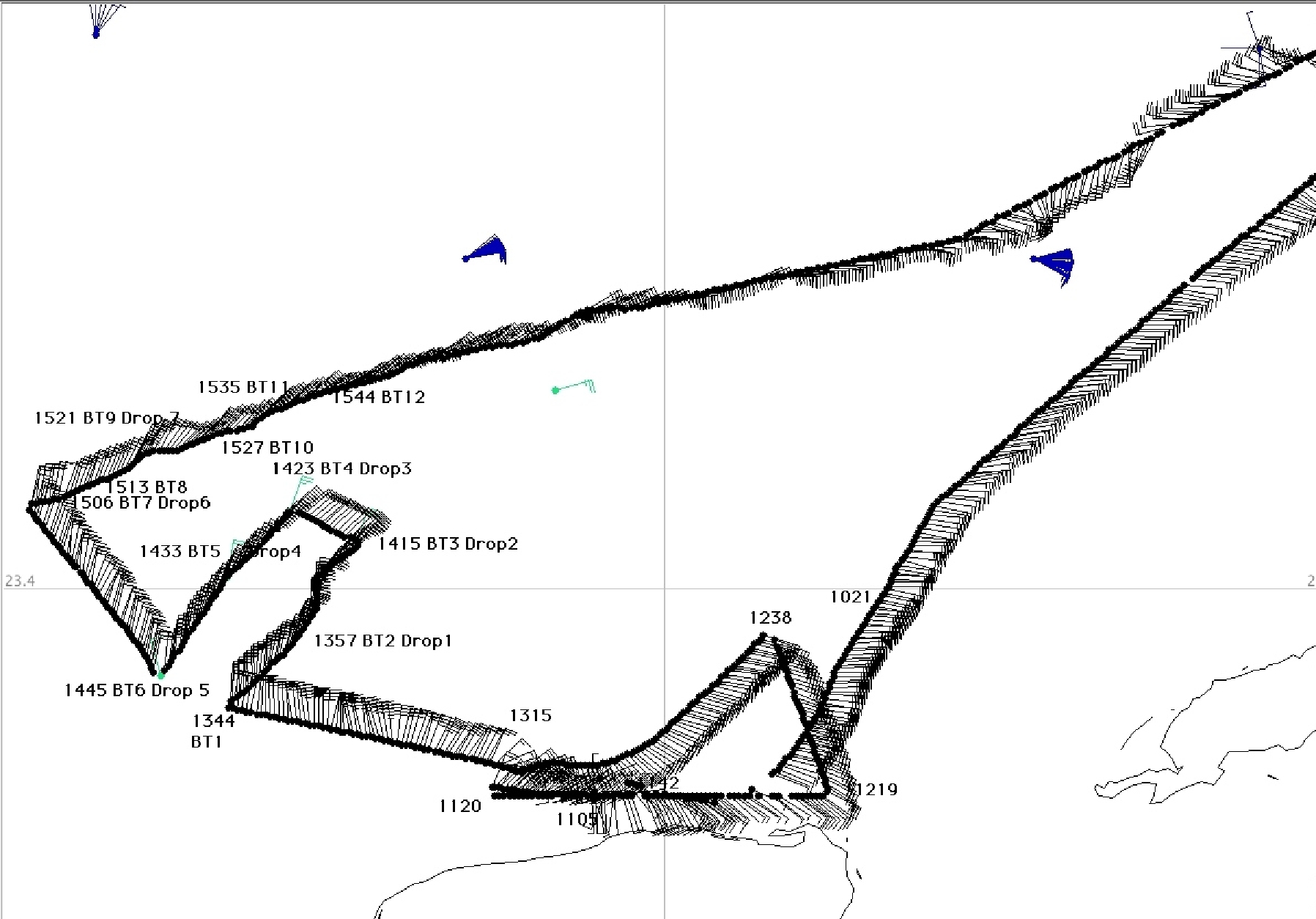
Figure 2. N42 flight track showing 1500 ft flight-level winds, AXBT
(BT), GPS dropsonde (Drop) locations, and key times along the track.
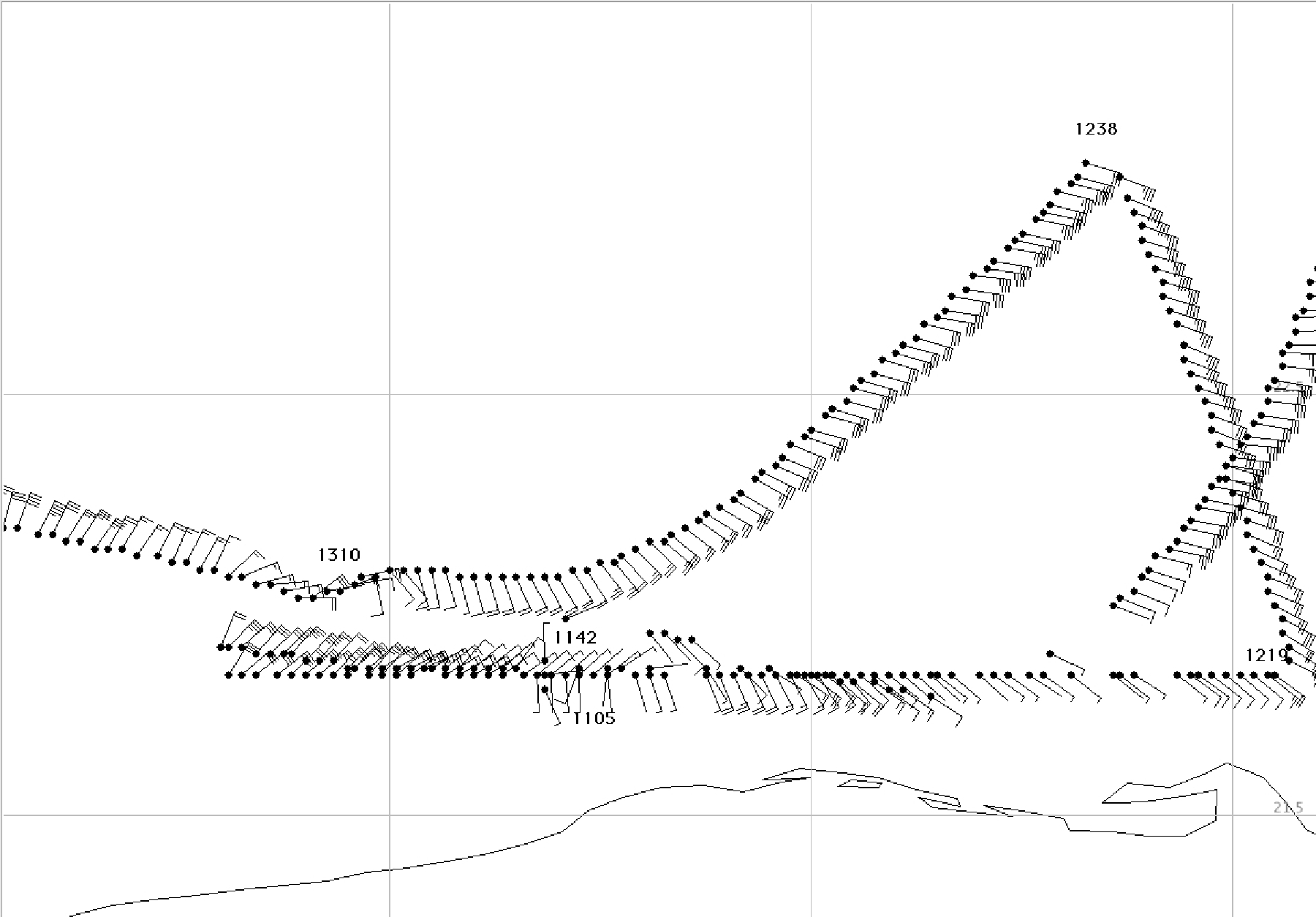
Figure 3. Close up of SFMR winds near the center of Dolly. Key times
along the flight track are plotted.
Problems :
The radar, flight-level, SFMR, and dropsonde systems all worked well on this
flight. One of the seven dropsondes was a fast fall, but the other 6 were fine.
Three of the 12 AXBTs failed to report and all of these were channel 14 BTs.
Since the software had yet to be modified, the real-time Doppler analysis
could not be performed due to the low-level nature of this flight. The radar
system had to be restarted a couple of times, but only short time periods of
missing data resulted.
Michael Black
08/27/08
Mission Data :
1 second listing |
NetCDF listing
Page last updated September 2, 2008
Return to Mission page.
 Mission Summary
Mission Summary




